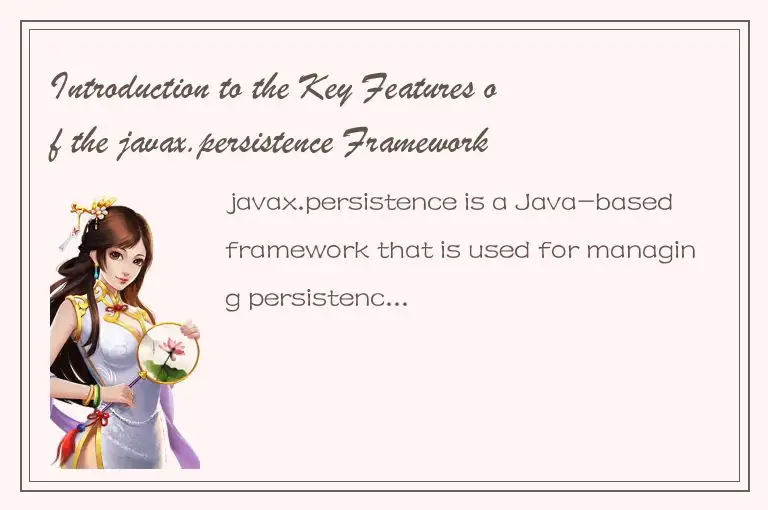javax.persistence is a Java-based framework that is used for managing persistence of objects in a database. This framework is typically used in enterprise applications that require a robust and scalable solution for managing large amounts of data. The javax.persistence framework has been developed with a focus on making the development of applications more efficient and effective. In this article, we will explore some of the key features of the javax.persistence framework and take a closer look at how it is used in modern application development.

Annotations
One of the key features of the javax.persistence framework is the use of annotations. Annotations are used to define the mapping between Java objects and their corresponding database tables. This allows developers to work with the database using pure Java code, without having to write any SQL queries. The javax.persistence framework provides a set of annotations that can be used to map Java objects to database tables. Some of the most commonly used annotations include @Entity, @Table, @Column, @GeneratedValue, and @Id. These annotations help to simplify the process of mapping Java objects to database tables and make it easier to work with the database.
Object-Relational Mapping (ORM)
The javax.persistence framework is built on top of the concept of Object-Relational Mapping (ORM). This concept allows developers to work with Java objects as if they were simple data types, without having to worry about their persistence in the database. ORM is a way of mapping Java objects to database tables, without having to write any SQL queries. This simplifies the development process and makes it easier to work with the database.
Transactions
The javax.persistence framework provides support for transactions. Transactions are used to group together a series of operations that need to be executed as a single unit of work. Transactions are used to ensure that the database remains in a consistent state, even if an error occurs during the execution of a set of operations. Transactions are essential for enterprise applications, as they help to ensure the reliability and consistency of the data stored in the database.
Queries
Another key feature of the javax.persistence framework is its support for queries. Queries are used to retrieve data from the database. The javax.persistence framework provides a set of query APIs that can be used to create and execute queries. These APIs are designed to be easy to use and provide developers with a flexible way of querying the database. The javax.persistence framework supports both JPQL (Java Persistence Query Language) and SQL queries. JPQL is a type-safe and portable query language that is similar to SQL, but is designed specifically for working with Java objects.
Caching
The javax.persistence framework provides support for caching. Caching is a technique that is used to improve the performance of the database by storing frequently accessed data in memory. By caching frequently accessed data, the database can reduce the number of disk reads required to access that data. This can result in significant performance improvements for large-scale enterprise applications.
Conclusion
In conclusion, the javax.persistence framework is a powerful tool for managing persistence in Java-based enterprise applications. With its support for annotations, object-relational mapping, transactions, queries, and caching, it provides developers with a complete set of tools for working with the database. By using the javax.persistence framework, developers can focus on the business logic of their applications, without having to worry about the underlying database infrastructure. This makes it easier to develop robust and scalable enterprise applications that can handle large amounts of data.




 QQ客服专员
QQ客服专员 电话客服专员
电话客服专员